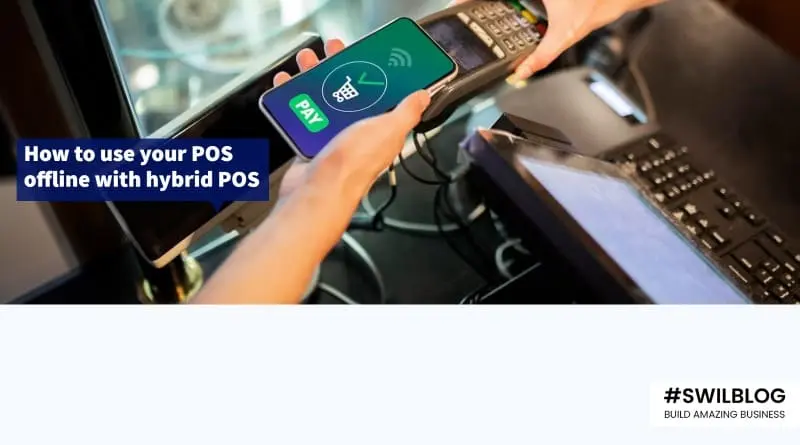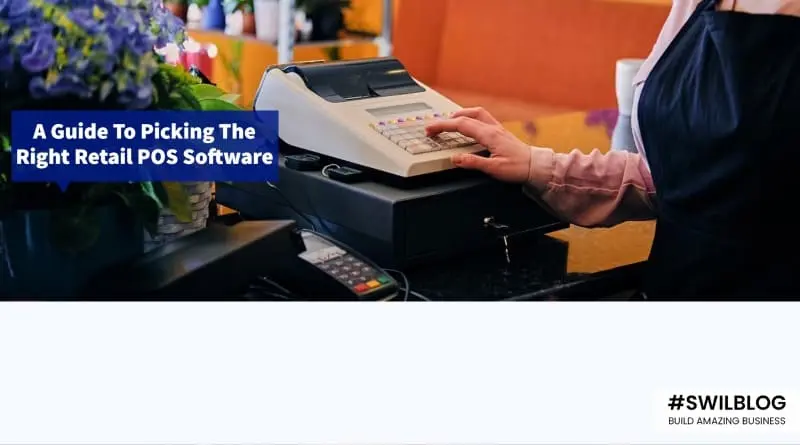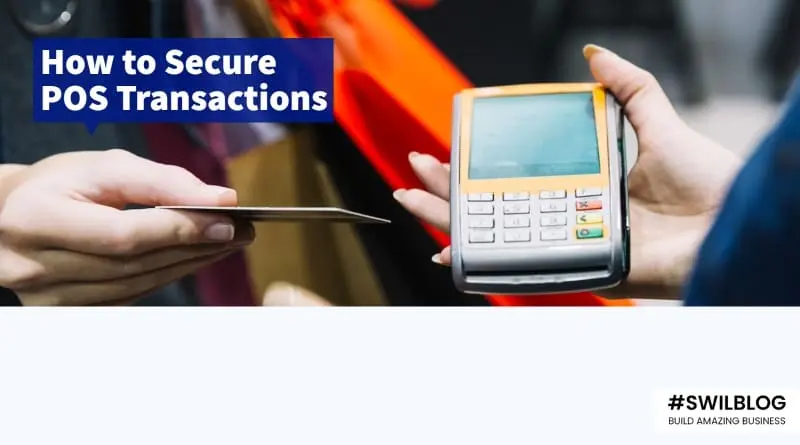A POS system, also known as a point of sale or sales system, is an essential tool for businesses dealing directly with customers. These systems replaced bulky cash registers a few years ago and allow businesses to conduct transactions quickly and easily. Depending on the POS software, POS systems can also be used for other tasks, such as managing inventory, managing customer relationships, tracking employee productivity, and conducting advanced reporting.
As the popularity of point-of-sale (POS) systems rises, there is more competition amongst POS software providers and more excellent choices for businesses. When it comes to POS software, the most common are cloud-based and on-premise POS software. A hybrid POS system is relatively new, but it has gained prominence quickly due to its advantages, versatility, and flexibility. Choosing the right POS software and type of POS system can help you maximize the benefits of POS systems.
This guide will help you decide if a hybrid POS system is the right choice for your business or not.
Article Content-
- What is a Hybrid POS?
- What are the benefits of using a Hybrid POS?
- Benefits of Using Hybrid POS for Your Restaurant
- What are the risks associated with using a Hybrid POS?
- A hybrid offline POS system is a restaurant’s secret weapon
- Conclusion
What is a Hybrid POS?
A hybrid POS system is a type of point-of-sale (POS) system that incorporates both electronic and manual components. This allows businesses to more easily transition from one type of POS to the other, as well as take advantage of the best features of each technology.
Hybrid systems are becoming increasingly popular because they offer several advantages over traditional point-of-sale systems. For example, hybrid systems are easier to use for customers with disabilities or those who are unfamiliar with computers. They also tend to be faster and more accurate than traditional POS systems, which can save businesses time and money in terms of processing transactions.
However, hybrid systems are not without their own set of challenges. For example, they may require more maintenance than traditional POS systems, and they may not be compatible with all types of software. In addition, they may be more expensive to purchase and maintain than traditional systems.
What are the benefits of using a Hybrid POS?
A hybrid POS system is a great way to save money and improve your business. Here are some of the benefits:
1. Reduced Costs: A hybrid POS system can help you reduce costs associated with traditional point-of-sale systems, like hardware and software licenses. Instead of having two separate systems, you can use one hybrid POS system that combines features from both types of systems. This will save you money on both the purchase price and ongoing costs.
2. Improved Efficiency: A hybrid POS system helps businesses achieve improved efficiency by combining the best features of both traditional point-of-sale (TPOS) and kiosk solutions into one platform.
3. Increased Customer Engagement: A hybrid POS system can help you engage customers more effectively by providing them with a seamless experience when making purchases. This can help you attract new customers and increase business turnover.
4. Enhanced Security: A hybrid POS system can help you improve security by integrating features from both TPOS and kiosk solutions. This can help you protect your business from cyber-attacks and other security risks.
5. Reduced Training Requirements: A hybrid POS system can help you reduce training requirements by integrating features from both TPOS and kiosk solutions. This can help you reduce the time and cost required to learn how to use the system.
Benefits of Using Hybrid POS for Your Restaurant
A hybrid POS is a valuable tool for efficient restaurants. Here are seven reasons why using one can benefit your business.
1. Take orders on multiple POS terminals to speed up your service
A cloud-based POS system would be unable to communicate with terminals in offline mode, which would make it difficult for restaurants to manage orders. A hybrid POS system allows terminals to communicate with one another in offline mode, even in the event of an Internet outage. This allows restaurants to run their businesses without any disruptions.
2. Clock In and Out on Different Devices
Since information can only be stored on one tablet when a cloud POS is in offline mode, staff have to take turns using the single working tablet. This can lead to longer wait times for customers, but it’s still business as usual with a hybrid POS in offline mode. Because all tablets can still communicate with one another, staff can clock in and out on any device.
3. Send Orders to Your ( KDS) Kitchen Display System
If your cloud-based POS system goes out, orders entered into the lone working device will be sent to or displayed on your restaurant’s kitchen order system. This extra step takes servers away from guests, and handwriting inevitably causes order errors. With a hybrid offline system, your peripheral hardware is still supported, even if you don’t have an Internet connection. Your back-of-house staff can still see orders on the KDS, even if your WiFi isn’t working.
4. Process gift cards to receive discounts and rewards
A hybrid POS system can work with gift cards while offline, ensuring that gift card holders are taken care of in the event of a stalled Internet connection.
5. Access Reports
Cloud-based POS systems allow for real-time reporting, which is a valuable tool for business decision-making. However, if your cloud-based POS system goes offline, reports will be unavailable. A hybrid POS allows you to access reports on-premise and on the go, while still ensuring that the data is up to date.
6. Access your customer data to improve your customer experience
With a cloud system, you lose access to your customer data, which means you can’t customize the dining experience or make suggestions for accommodations. You can keep using your customer data even if you’re not online.
7. Please continue to sign in and out
If you log out of a device on a cloud-based point of sale while the internet is down, you will not be able to log back in. If you log out of your only point of sale terminal, that may mean you are unable to use your point of sale at all until your internet connection is restored. With a hybrid system, you have the flexibility to log in and out as usual with or without wireless.
What are the risks associated with using a Hybrid POS?
A hybrid POS system is a combination of both a traditional point-of-sale (POS) terminal and an electronic cash register. While there are many benefits to using a hybrid POS, there are also some risks associated with it.
One of the biggest risks with using a hybrid POS system is that it can be difficult to maintain. If the software or hardware used in the system becomes outdated or fails, it can create major problems for businesses. Additionally, if data is lost or stolen, businesses could end up losing money as well as customer information.
Another risk associated with using a hybrid POS system is that hackers may be able to gain access to customer data and credit card numbers through the terminal.
If your business chooses to use a hybrid POS system, it is important to ensure that you are taking all of the necessary precautions to protect your data and customers’ information.
There are a few risks associated with using a hybrid POS system:
- The software may not be as reliable as traditional point-of-sale systems. This could lead to lost sales and increased customer complaints.
- If the software is not correctly maintained, it could become challenging to use or even crash altogether.
- If the hardware used in a hybrid POS system is not up to par, it could fail and cause significant damage to business operations.
Overall, using a hybrid POS system is a risky proposition, but it could be a valuable tool for businesses looking to reduce costs and improve their operations.
A hybrid offline POS system is a restaurant’s secret weapon
A hybrid POS system is a great way to stay reliable when your Internet goes down. It combines the reliability of a legacy POS system with the convenience of a cloud-based system.
A disruption in payment processing can be the most significant disruption for restaurants that rely on a cloud-based point-of-sale system. They are unable to process card payments, which causes them to lose business from customers who do not carry cash.
If you have a hybrid POS, you can still take payments even when the WiFi is down. With a hybrid POS, payments work best when your payment processor is integrated with your POS because both tools run on the same system.
If you have an unsupported payment processor, it may not be able to process payments offline, even if your POS does. Make sure that your payment processor is integrated with your POS and can accept card payments in offline mode.
Conclusion
A hybrid offline POS system is a great way to save money and improve efficiency. By combining the best features of both online and offline systems, SWIL offers customers a unique experience that can’t be found anywhere else.
Additionally, offline systems are typically less expensive than online ones, which makes them a great option for small businesses that don’t have the budget for an extensive online presence.









